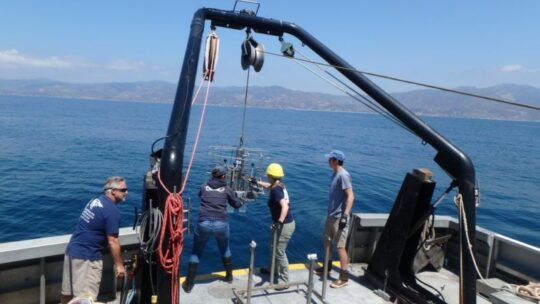Study finds little change in oxygen content in deep sediments within Santa Monica Bay over the last century
In urbanized areas around the world, nutrient runoff has led to low oxygen zones in coastal waters and sediments, which can be deadly for any organisms living there. As Los Angeles has grown from a small town to an urban giant of more than 15 million residents over the last 100 years, researchers and managers have wondered about the fate of the deep waters and sediment of Santa Monica Bay. University of Southern California (USC) Sea Grant funded researchers at USC and the University of California Los Angeles to map the deep water oxygen content and changes over time of Santa Monica Bay using sediment cores.
Key Results:
- There has been little change in deep sediment oxygen in Santa Monica Bay over the last 100-120 years
- Low oxygen has not spread in the deep sediments of Santa Monica Bay
Project Impacts & Application:
- Results were presented at the Southern California Geobiology Symposium
- An educational display of sample sediment cores was created for public education at the Santa Monica Aquarium
- A YouTube video highlighting these interesting project methods was created for public education
Principal Investigators:
- William M. Berelson, Ph.D., USC
- Tina Treude, Ph.D., UCLA
Funding:
NOAA, 2016-2018
Additional Info:
- Sediment deoxygenation time-lapse video
- https://www.ioes.ucla.edu/project/usc-sea-grant-project-expansion-oxygen-deficiency-santa-monica-basin/
Access our Publications Database to view publications from this project or other related topics


